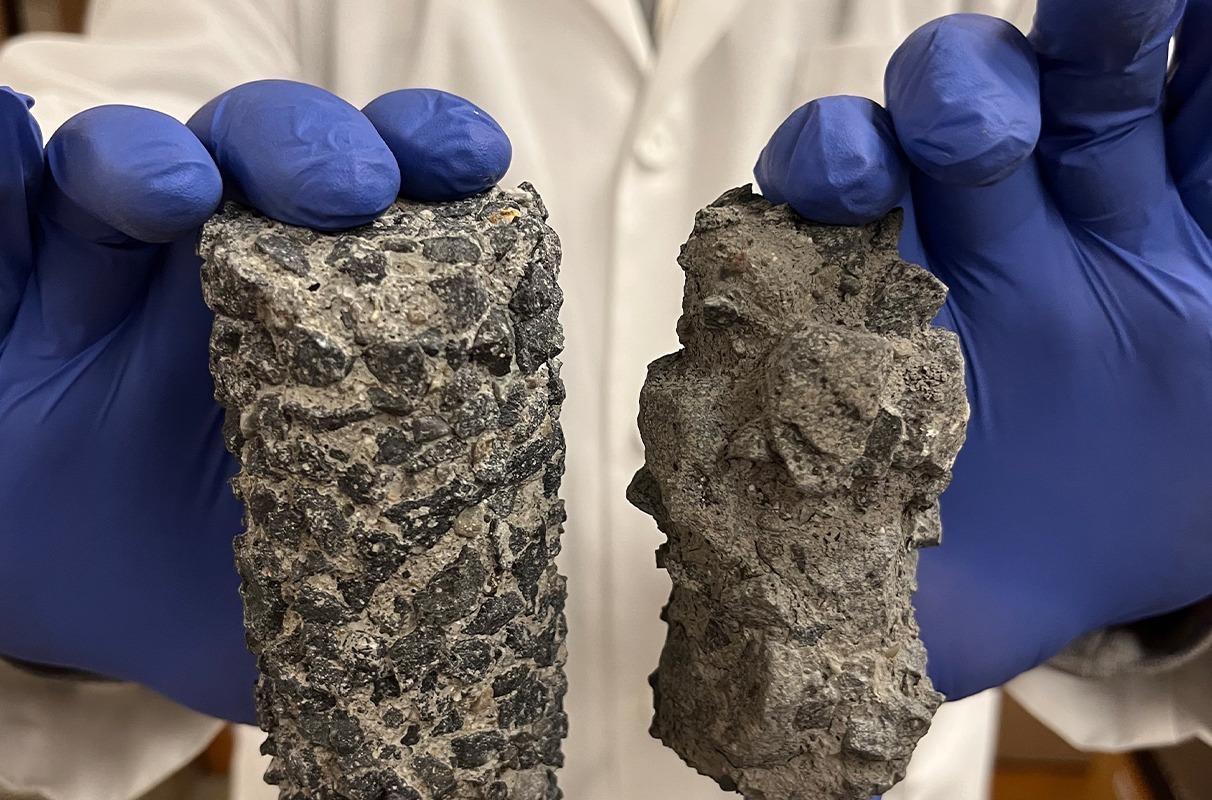Researchers from the Washington State University (WSU) have developed a nanomaterials-engineered penetrating sealer that can better guard concrete from moisture and salt, which are two of the most damaging factors in crumbling concrete set up in northern states.
 Comparison of a concrete sample coated with nano-modified sealer (left) versus untreated concrete (right). Image Credit: Washington State University.
Comparison of a concrete sample coated with nano-modified sealer (left) versus untreated concrete (right). Image Credit: Washington State University.
In contrast to a commercial sealer, the unique sealer exhibited a 75% improvement in repelling water and a 44% improvement in decreasing salt damage in laboratory experiments. The study could offer a novel way to resolve the challenge of aging pavements and bridges in the United States.
We focused on one of the main culprits that compromises the integrity and durability of concrete, which is moisture. If you can keep concrete dry, the vast majority of durability problems would go away.
Xianming Shi, Study Lead and Professor, Department of Civil and Environmental Engineering, Washington State University
Shi and graduate student Zhipeng Li published their findings in the Journal of Materials in Civil Engineering and have applied for a provisional patent.
Much of the country’s important infrastructure, such as the U.S. highway system, was constructed from the 1950s to the 1970s and is currently close to the end of the lifetime for which it was engineered. Since the late 1990s, for every four years, the American Society of Civil Engineers has given a report card of U.S. infrastructure that reveals regularly poor or failing grades.
Roughly 8% of approximately 600,000 bridges in the United States are said to be structurally deficient, and one out of every five miles of highway pavement is not in a good condition. The problem is intensified in cold climates by numerous freeze and thaw cycles and by the growing use of deicer salts in the last few decades, which can damage the concrete.
Concrete, even though it seems like solid rock, is basically a sponge when you look at it under a microscope. It’s a highly porous, non-homogenous composite material.
Xianming Shi, Study Lead and Professor, Department of Civil and Environmental Engineering, Washington State University
Topical sealers have been developed as one tool to guard concrete, and many state departments of transportation use them specifically to safeguard bridge decks, which appear to suffer the most from salt damage. The commercial sealers offer some level of protection, but moisture is frequently able to penetrate into the concrete, Shi said.
In their study, the scientists incorporated two nanomaterials, graphene oxide and montmorillonite nanoclay, into a siliconate-based sealer found in the market. The nanomaterials densified the concrete’s microstructure, making it tougher for liquid water to enter. They also formed a barricade against the penetration of water vapor and other gasses that manage to enter into the concrete.
The nanomaterial also guarded the concrete against the chemical and physical attacks of deicing salts. The penetrating sealer is engineered to be multifunctional, as it can also act as a curing aid for fresh concrete.
The WSU sealer is water-based rather than using any organic solvent, which means it is more eco-friendly and safer for workers, Shi explained.
Traditionally, when you switch from an organic solvent to water, you sacrifice the sealer’s performance. We demonstrated that the use of nanomaterials mitigates that reduction in performance.
Xianming Shi, Study Lead and Professor, Department of Civil and Environmental Engineering, Washington State University
The scientists have carried out primary market analysis with industry stakeholders and are exploring ways to further enhance the sealers. They are examining how the nanomaterials-based sealers might help guard concrete against abrasion or microbial damage, the day-to-day wear and tear that degrades the material in high-traffic zones.
They plan to carry out pilot-scale demonstrations in the next two years, setting up an experiment of concrete infrastructure on the WSU campus or in the city of Pullman.
The work received support from the WSU-led National Center for Transportation Infrastructure Durability and Life-Extension and the WSU Office of Commercialization.
Journal Reference:
Li, Z. & Shi. X. (2022) Effects of Nanomaterials on Engineering Performance of a Potassium Methyl Siliconate–Based Sealer for Cementitious Composite. Journal of Materials in Civil Engineering. doi.org/10.1061/(ASCE)MT.1943-5533.0004148.
Source: https://wsu.edu